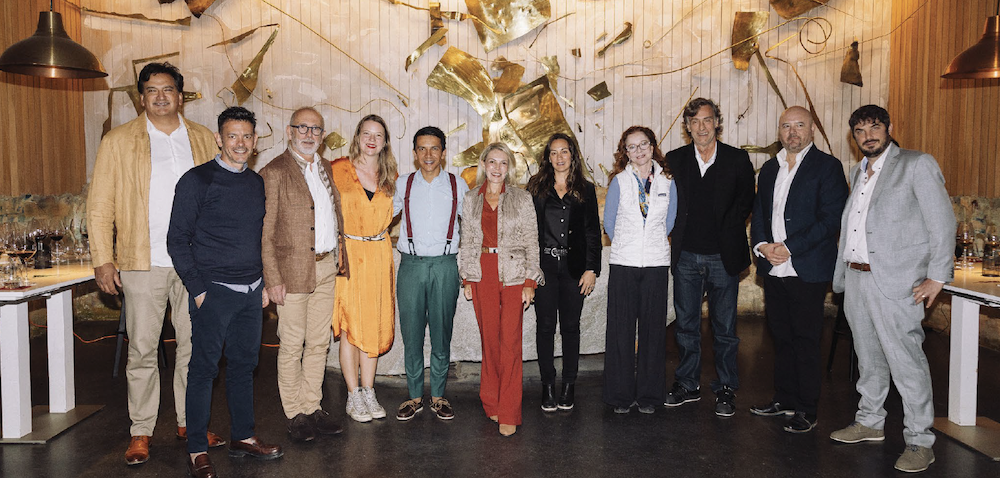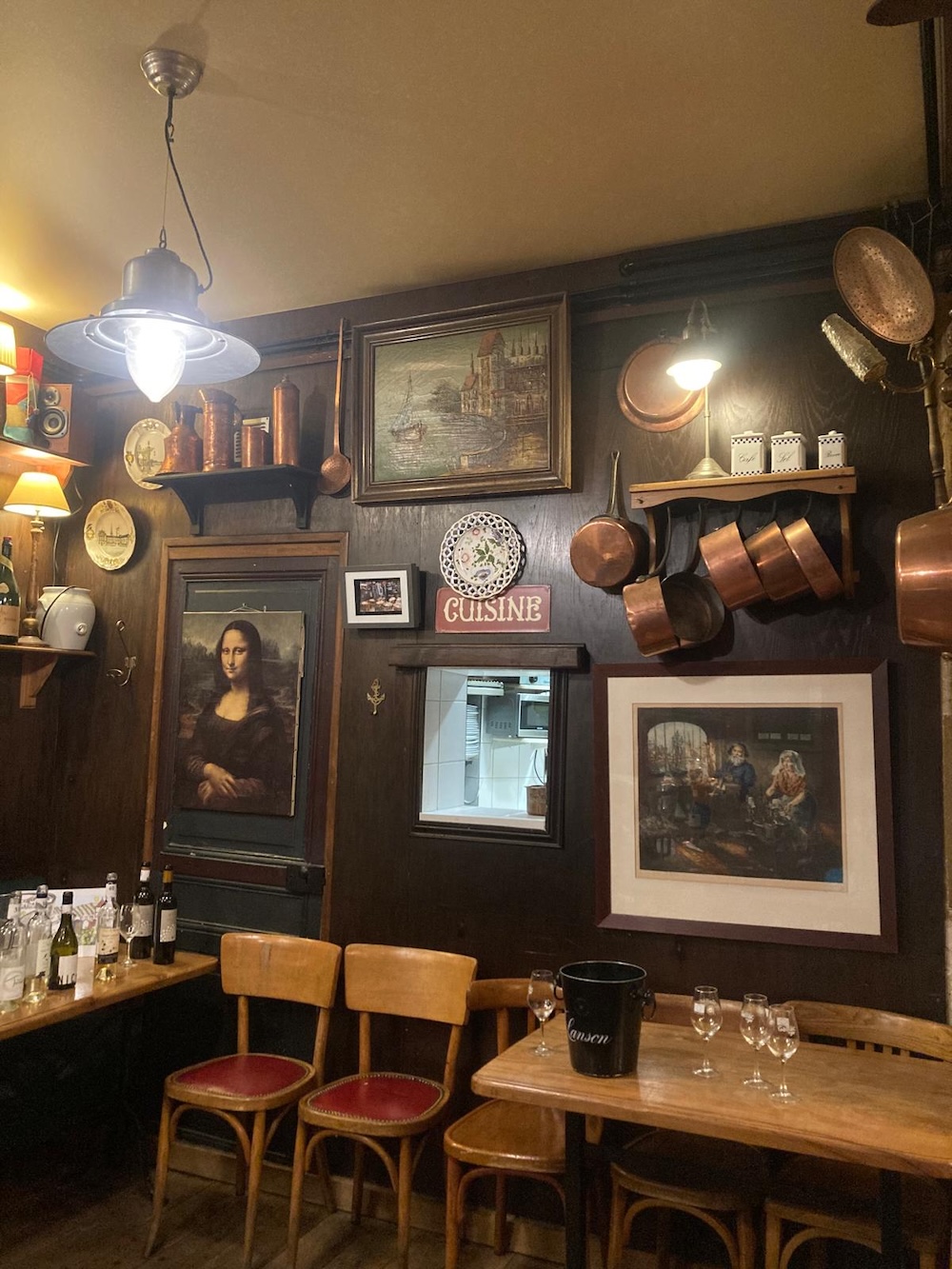
Discovery

Discovery
By Maria Netsika, chemist, oenologist, wine journalist, author, posted on 16 February 2024
The wines of Greece, an exciting and exceptional option for those willing to explore beyond the commonplace. I suggest you do not miss out the opportunity. Follow us to a wine tasting safari in Greece!

We begin our journey to the Greek vineyards, from Western Greece, Zitsa in Epirus. Lord Byron and his travelling companion John Hobhouse, about two centuries ago, spent a weekend at the monastery of Prophet Elias in Zitsa. The natural environment so enchanted the quirky poet that he wrote a long poem in which he mentions the vineyards of Zitsa. Mountainous, spread out on slopes, enjoying the view of the Ionian Sea. We see a similar sight.
Here, the altitude reaches 650 to 700 metres. The vineyard of Zitsa is spread out on slopes facing the Ionian Sea. The limestone origin of the soils helps to ensure good drainage and to maintain relatively high temperatures, an important element for these cold, mountainous areas. The continental climate with low average temperatures helps to maintain the high acidity and aromas of Debina, which is the dominant grape of the zone, covering about 95% of the vineyard. It produces still and sparkling P.D.O. Zitsa wines. It is no coincidence that Zitsa is one of only three regions in Greece (the other two being Amyndeon and Rhodes) that have a tradition in sparkling wines production. Apart from Debina, the red Vlachiko and Bekari, are cultivated exclusively in this vine-growing zone.

The tasting of wines and spirits at Zoinos Wines give us a glimpse of today and a vision of tomorrow’s wines
We will learn about it all, in the winery of Zoinos Wines. The story of Zoinos begins in 1954, with the creation of the first cooperative in the country, initiated by the vinegrowers. Today, at their new winery/distillery we will see how cooperative responsibility is combined with modern knowledge. Photographs, texts and objects tell us the viticultural and wine history of the region. And the tasting of their products give us a glimpse of today and a vision of tomorrow’s wines.
We are in Naoussa, a picturesque town in the green hinterland of Central Macedonia with a famous carnival, and of course with a well-known vineyard and deep red, robust wines.

Naoussa's vineyards are located on the southeastern slopes of Mount Vermio, in a privileged position. Their altitude starts at 150 metres and reaches 350 metres. The majority of their soils are clay with or without calcium carbonate. Sheltered from the cold northern winds, they benefit from the rays of the midday sun.
Famous P.D.O. Naoussa wine is made exclusively from Xinomavro. A fine red grape, well adapted to continental climates, grown in more areas than any other variety in Greece. Its dominance extends from the slopes of the mountains of Central Macedonia to Pindos. Xinomavro in Naoussa easily reaches perfect ripeness. It appears with remarkable potential in fermentation and aging aromas. It is the ecosystem that favours it.

The Vaeni Naoussa, founded in 1984, is one of the largest cooperatives in Greece and controls almost 50% of Naoussa's wine-growing area. It took its name from the barrel used in the old days to press the grapes with the feet (vaeni). As for the most authentic expression of Naoussa wines, the people of Vaeni believe that “although Naoussa has associated its name with wines of long ageing, it has been proven that in soils of medium to light mechanical composition, Xinomavro can give fresh wines with a strong fruity character and a lot of finesse. In heavy soils, on the other hand, it approaches higher levels of phenolic maturity. When these soils also have calcium carbonate, they can produce rich, deep wines with unique aromatic potential, suitable for long ageing.”
Our journey continues in Eastern Macedonia, in the shadow of the majestic Pangeon Mountain, the Golden Mountain, source of gold and silver in antiquity, place of upbringing and worship of the god Dionysus according to the Greek mythology. Today, on its southeastern fringes, the vines receive the cool breeze of the Strymonikos Gulf while the mountain protects them from the cold north winds. The soil is stony, arid and well drained. Favourable conditions for the winemakers of the area who planted cosmopolitan grapes and some Greek varieties. The wines produced are marketed as P.G.I. Pangeon.

The irresistible Dionysian charm hidden on the slopes of Pangeon drive us to its wonderful wineries. The Karaberidis family has been involved in viticulture for three generations. Since 2004 they have been making wine from Greek varieties: Assyriko, Alexandria, Agiorgitiko and the French: Cabernet Sauvignon, Cabernet Franc, Syrah, Merlot, Chardonnay & Sauvignon Blanc which they cultivate in their 12 ha vineyard that starts from the foot of the mountain and climbs up the slopes up to 300 m. Their winery is called Charismatiki Wines.
The road leads us to Northern Peloponnese. We begin the pleasant adventure that turns out to be a visit to the vineyards... and that's because Aegialia, on the slopes of Panachaiko Mountain and Chelmos, is an area with an exceptional natural landscape and stunning sea views. The slopes start from soft hills above the Corinthian Gulf and reach the outskirts of Kalavryta. The rivers that cross it form beautiful gorges, such as that of Vouraikos, which climbs along the serrated railway from Diakofto to Kalavryta.
Among other things, however, Aegialia is a charismatic and diverse vineland. Its vineyards, spread out on the slopes, at an altitude of 300 to 900 meters, from a soil and climate point of view, are among the most beautiful in the world. On the northern hills that enjoy cool air currents, and in vineyards with lower yields per hectare than the rest of the region, the P.G.I. wines are produced. Whites with a particular style and rich reds with a character that evolves beautifully through time.
Cavino is active in this region since 1958. Today it is one of the largest Greek wine exporters. It produces a very wide range of products at its state-of-the-art winery located on the coastal road. In 1999, Cavino took over the vineyard of the Monastery of the Mega Spileo. 20 ha on the plateau of Agios Nikolaos in mountainous Aegialia. The vineyard was restored, the Metochi winery was renovated and the single vineyard wines are proudly bearing the name Mega Spileo Estate. Greek Mavrodafni, Mavro Kalavritino, Malagousia, Assyrtiko, Lagorthi, next to Syrah, Cabernet Sauvignon and many other grape varieties are cultivated and grown organically on the estate’s 4 vineyards. The sunny Mediterranean climate, combined with the expert craftsmanship of the winemakers and the successful blending of indigenous and international varieties, result in wines of distinct character that have earned the respect of experts and captured the hearts of wine lovers worldwide. It is worth noting that during the vintage of 2023, for the first time, the estate vinified the Assyrtiko and Mavrodafni in the historic winery open stone tanks, which have recently been renovated.

Since September 2023, the Estate with its "doors open" to wine lovers, excursionists and ordinary travelers, offers hospitality, wine tours and tasting programmes. An unforgettable experience of wine culture in an environment of rare natural beauty.
We continue our journey in the northern Peloponnese. Driving east we leave Corinth behind us and head straight to Nemea, the largest and most famous wine-growing region of Greece. The beauty of the landscape is stunning. Vineyards, olive groves and cypress trees. Whichever window we open to the countryside of Nemea we are confronted with the tantalizingly simple and disarming beauty of its colours and aromas.
Nemea's wine-growing zone is the largest in Greece. Its vineyard covers a total of 16 communities and grows on the plain up to the foothills of Mount Kyllinios, from 260 to 800 meters altitude, in an area of about 3000 ha. The dominant grape is Agiorgitiko. Deep purple, the beautiful, charismatic grape with its velvety skin is highly sought after. But it thrives and excels here where the cool north winds and low temperatures that usually prevail help it ripen smoothly. And since 1971, Nemea wine, one of the country's most classic reds, entered the category of P.D.O.
The wine-growing zone of Nemea, due to its size and configuration, is obviously extremely heterogeneous. Different altitudes, soils and microclimates make up a puzzle of complexity that automatically translates into a multitude of wine types. The number of wineries is constantly increasing, as the area is attracting the interest of more and more winemakers, many of whom are active in other areas. It is no exaggeration to say that Nemea has managed to gather the cream of Greek wine production, resulting in an ever-increasing number of quality labels and the recognition of the Nemea and Agiorgitiko brand in the Greek and international markets.

Nemea. Different altitudes, soils and microclimates make up a puzzle of complexity that automatically translates into a multitude of wine types
We will start our Nemea itinerary with a visit to Papaioannou Estate. The recently modernized family winery is located on the main road of the village Palaia Nemea. The founder of the winery, Mr. Thanasis Papaioannou, was one of the great figures of the Greek vineyard, one of the pioneers of wine in the country. Papaioannou Estate Nemea, the label that he first released in 1988, was destined to introduce Nemea and Agiorgitiko to every Greek wine lover, changing once and for all the fate of the country's most important P.D.O. With a deep knowledge of the vineyard and perseverance in quality, he established a privately owned vineyard of organic farming - 60 ha - in various areas of the zone, so that each variety can be found in the ecosystem that suits it perfectly. The wide dispersion of the vineyards and the differences in the age of the plants lead to a multi-purpose result and emblematic labels for the history of Greek wine.
Driving along, we see the winery of the Nemea Wine Cooperative in the distance. It impresses with its size. And if you are wondering, I can confirm that it is the largest in the region, as it vinifies all the grapes of its members (they produce 90% of the local production) that are not directed to private wineries. The Cooperative was founded in 1937 and originally had 70 members. In 1959, in collaboration with the Wine Institute, it carried out the first experimental bottling of Agiorgitiko. Today, after 86 years of operation and in modern facilities, it has more than 400 members and the capacity to vinify 10,000 tons of grapes annually, making it one of the largest producers nationwide.

Our last stop in Nemea is the small modern winery of the Papantonis Winery in the town of Argos, on the road to the Ancient Theatre. Charming and neat, it reflects the care that Antonis Papantonis gives to his wines. They are produced from the privately owned vineyards in Maladreni, on slopes with an average altitude of 320 meters, and clay-sandy soil with drainage properties that allow the grapes to ripen slowly. In 1979, Antonis Papantonis bought these vineyards, feeling that nature, vine growing and wine production could fill him more than life in the big city. Today he continues the same attitude of life and creation, focusing his activity on only two Greek varieties (Agiorgitiko, Roditis) and one international (Chardonnay), staying true to the meaning of the names of his labels: red Miden Agan, a P.D.O Nemea (meaning "nothing in excess") and white Metron Ariston (meaning that avoiding extremes and excesses is the best attitude). We will taste them, accompanied with traditional local delicacies, as the winery welcomes visitors every day.


Our journey to the wine Peloponnese continues on the west coast, in Messinia. Here the vineyards are located on highlands, exposed to the favourable influence of the Ionian Sea, on calcareous soils, with smaller water reserves and the most remarkable vineyard area is Trifyllia. As Dimitris Panagiotopoulos from the Panagiotopoulos Wines tells us: "The relatively low altitude, the fertile soil, the sweet climate, the high sunshine and the dry and thermal conditions that prevail during the grape ripening period have determined the varietal composition of the vineyard. The white Greek varieties: Roditis, Fileri, Assyrtiko and the red Mandilaria, Mavrodaphne, Fokiano, Korinthian, Agiorgitiko and Avgoustiatis were planted. Mostly, however, the winegrowers turned to the cosmopolitan grapes. Chardonnay, Ugni Blanc, Cabernet Sauvignon, Cabernet Franc, Grenache rouge, Merlot, Carignan cover most of the vineyards. And the wines produced are marketed under the PGI Trifyllia. Full-bodied whites, rosés with intense fruit and deep coloured reds reflect the warm climate where they are made, often referring to the wines of the New World." Dimitris, an enologist himself, with his viticulturist father and his agronomist wife, has been cultivating the vineyards surrounding his winery using organic methods since 1982. The modern facility is a good suggestion for those travelling to the region and want to get to know its wine profile. They will have the opportunity to browse through the vineyards and have a chance to discover the wine region.

Our last stop is Crete. Located at the southern edge of Greece, Crete is the largest and most populous of the Greek islands and 5th largest island in the Mediterranean. Despite its southern location, it is ideal for viticulture, which is why 1/5 of Greek wines are produced here. The Cretan vineyard, considered one of the most traditional in Europe, is located on the northern side. Not by chance, of course. Because the island may be famous for its mild and healthy climate, but the five-month summer, which makes it so popular with tourists, is not necessarily conducive to cultivation. The summer drought is not easily beaten. So the vine growers have chosen deep, fertile soils in valleys and slopes cooled by the Aegean's north winds. They set up their vineyards behind the mountainous backbone of Mount Psiloritis, to protect them from the hot liva of the East. This is how most of the vineyards are located in the north central part of the island, around Heraklion, in Archanes, Peza and Dafnes zones, as well as in Sitia, in the eastern part of the island.
Over the last 20 years, the wine landscape of Crete has been characterised by a steady shift towards quality. Next to the cooperatives, private individuals, small, large or larger, with privately owned vineyards, the necessary know-how and the willingness for research and experimentation, are also active. There has been a tremendous evolution in the varietal composition of the vineyard, which mainly cultivates local varieties, some of which, such as Vidiano, Plyto, Dafni, have been saved from extinction to surprise us with the dynamism and quality of their wines. And the legislator has generously granted the quality indications to the island. We count 7 P.D.O. and 6 P.G.I.

The Miliarakis family settled in Peza in the mid-19th century and therefore experienced the entire historical evolution of the place, first converting their inn into a winery and then moving from barrel to bulk and then to bottled wine. Minos wines has been operating as a winery since 1932. Having one of the oldest wineries in the zone, in 1952 it carried out the first bottling of wine on the island. Of course, from the first "Hani" held by Antonis Miliarakis to the present remodeled winery, the steps have been many. Today Nikos Miliarakis continues this tradition by producing a relatively wide range of both indigenous and international varieties. We will enter the "Sifis Miliarakis" hall, to watch an audiovisual show about the history of the company before experiencing the wine tasting at Metochi Miliarakis, among the vineyards.

Discovery

Discovery

Discovery